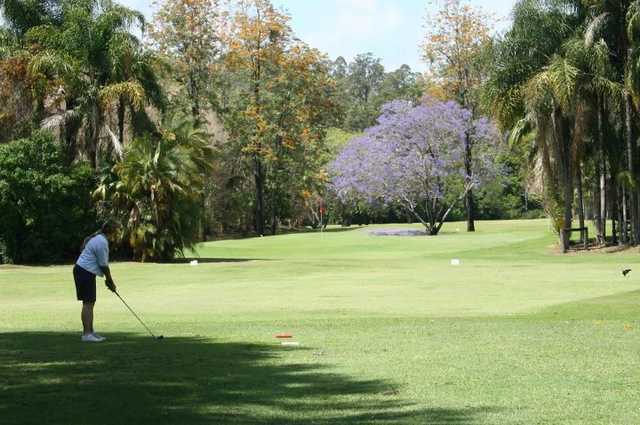
Spyglass uses a water hazard, elevation change and a narrowing corridor to challenge the golfer. There is a barranca at the end of the tee shot at 285 yards. The left side of the fairway gives golfers plenty of room to hit a conservative tee shot, but that makes the second and third shots even more challenging. A friend of mine has hit it in the waste area so many times that we’ve named it in his honor.

Rustic uses a waste area on the right side of the tee shot to give the golfer a decision about how much to cut off. When the wind is howling in the other direction, carrying the bunkers becomes even more tempting and the green becomes more difficult to hold. The hole still played true to its strategic character even when the wind added 30+ yards. On a recent visit we had 20+ MPH Santa Ana winds directly in our face. The width also makes it playable in different wind speeds and directions.
#Boomerang golf course how to
Like many holes at Olivas, it uses width to create choices on how to attack the hole. This hole is fun for golfers of all skill levels. Left side fairway locations are important to hit it close, unless your wedges are very dialed in. The connection area to the 18th green feeds balls down to this spot, and a back-left miss is ok as you’re putting uphill. I am not sure if they ever put the pin up here, but it would be a fun and challenging spot. Anything over the shelf in the middle will feed down to this location, but if you end up on the front of the green it’s a tricky two putt down the slope. Easiest to access from the right side of the fairway (position A or C), but left side of the fairway is ok because this area is flat and the ball feeds off the slope if you miss front-right on the approach shot.į - Back-left location. A is advantageous because of the very short distance to the flag, but not as ideal of an angle as other pin locations.Į - Front-left location.

Tee shots to B in the fairway are preferred (or left side of the fairway over the bunker if you can carry it!).

There is a right-to-left left kick slope that makes this pin tough to access from the right side of the fairway (especially position C). The primary feature is a steep drop off in the middle - the front sits on a plateau ~2 ft higher than the back, and is also a smaller surface.ĭ - Front-right location.

With the parking lot in the back, it’s certainly not the prettiest hole on the course, but it is one of the most strategic. It shares a double green with the 18th hole, and has red-staked marshland on the right hand side. The 9th hole is a mid-length par 4 at 344 from the blue tees. Olivas is a great example of how good architects fit golf courses into their natural environments, both in beauty and playability. The course has large greens with openings at the front that allow golfers to play a variety of shots to the hole depending on pin placement and wind. The course is about a mile from the ocean, and so wind is a constant. The result is an open, links-style course that feels ‘natural’ and fits in with its coastal plain surroundings. Golf has been played here since the 1960s but due to its location between the Santa Clara River and Ventura Harbor, drainage issues caused Richardson to redesign the whole course when the city hired him in 2001. Olivas Links is a Forrest Richardson designed muni course in Ventura, CA that opened in 2008.


 0 kommentar(er)
0 kommentar(er)
